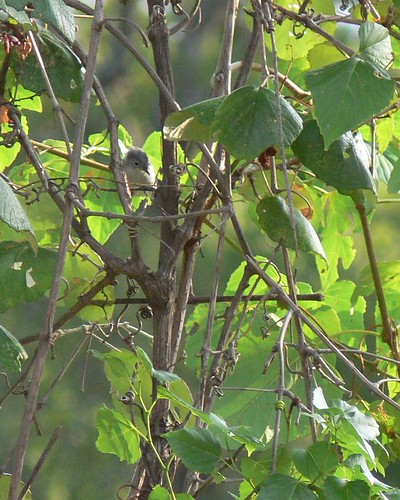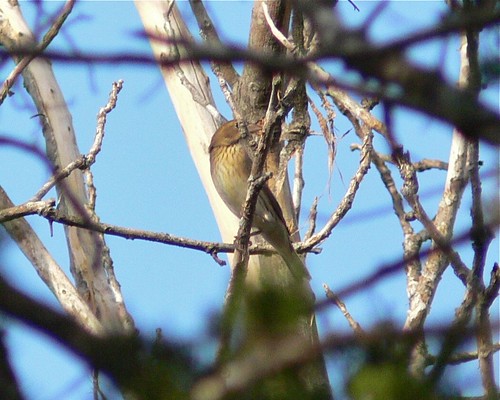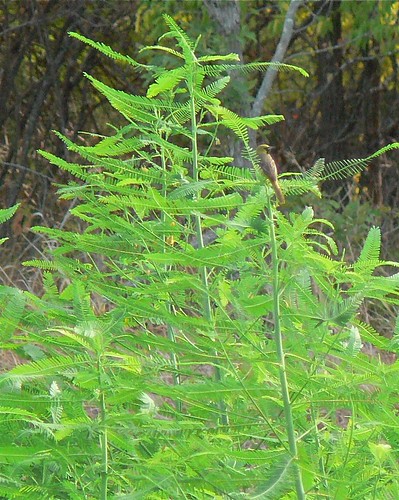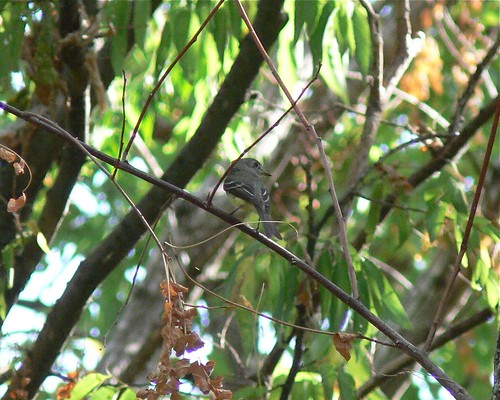I spent about 2.5 hours on Lake Creek Trail this morning, starting at the end of Braes Valley. The first half-mile of the hike-and-bike trail staring here has proven to be great birding during both spring and fall migration. The lush combination of riparian woods, tall grass, and low, dense brush attracts many different species of migrating birds. The numbers and diversity of south-bound fall migrating birds is increasing, but they weren't very cooperative for photos this morning. One of the most numerous species was Blue-gray Gnatcatcher. Their squeaky call could be heard all along the trail. Here's the best photo I got of one of these tiny active birds.
Many Dickcissels are also moving through the area now...
They're a grassland species that is best recognized by their loud rude-sounding flight call. (That's how I identified most of them this morning. You can listen to the call here.) A few were mixed in with the large groups of House Sparrows, House Finches, and Lesser Goldfinches in the tall grass in the creek bed. I managed to get this single poor photo of a first-year bird.
Increased numbers of Orchard Orioles are moving through the area compared to last week. I counted at least 6 this morning, and I got a photo of a first-year male bird in the creek bed. First year males go through a unique immature plumage with a black mask that does not look like their adult plumage. You can just make out the black mask in this photo.
Little flycatchers in the Empidonax genus were also common on the trail this morning. This genus is infamous for having about a dozen species that breed in North America that are very difficult to tell apart by sight. About 5 of these species move through central Texas in the spring and the fall. The best way to identify them is by sound, and not many were vocal this morning. The only ones I positively identified were the most common: a few Least Flycatchers. Here's the only photo I got of an "empid". I couldn't identify this one.
A few other fall migrants I found this morning were Painted Buntings, an Indigo Bunting, a Black-and-white Warbler, and a Yellow Warbler. These were the first south-bound warblers I've seen this fall. I also got a fleeting glimpse of a hawk in the Accipiter family -- either a Cooper's Hawk or a Sharp-shinned Hawk.
Here's the complete list of species I recorded. I just might go back out to the trail this evening just before dark to see if any of those "empids" are vocalizing. I'd love to identify a few more!





No comments:
Post a Comment